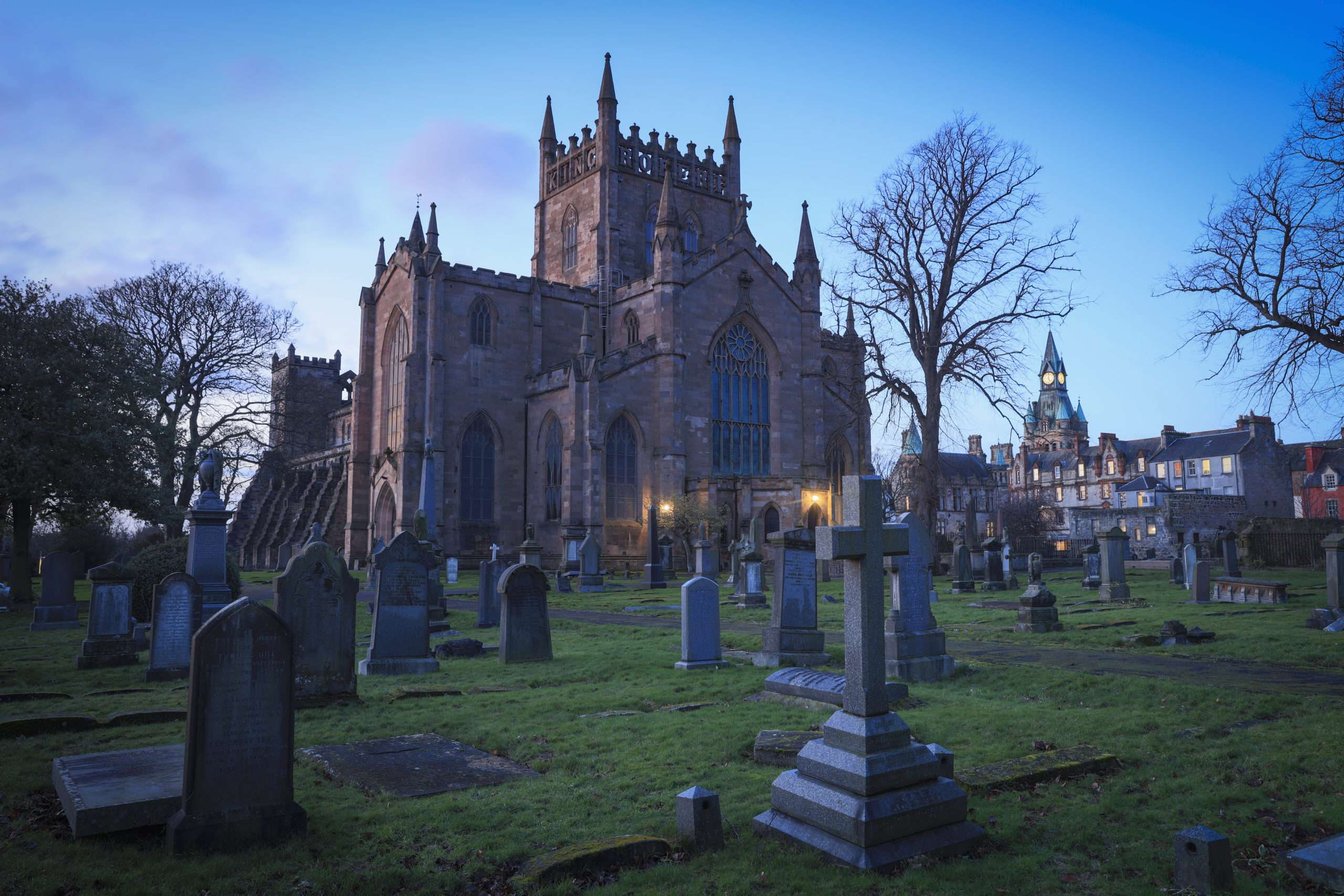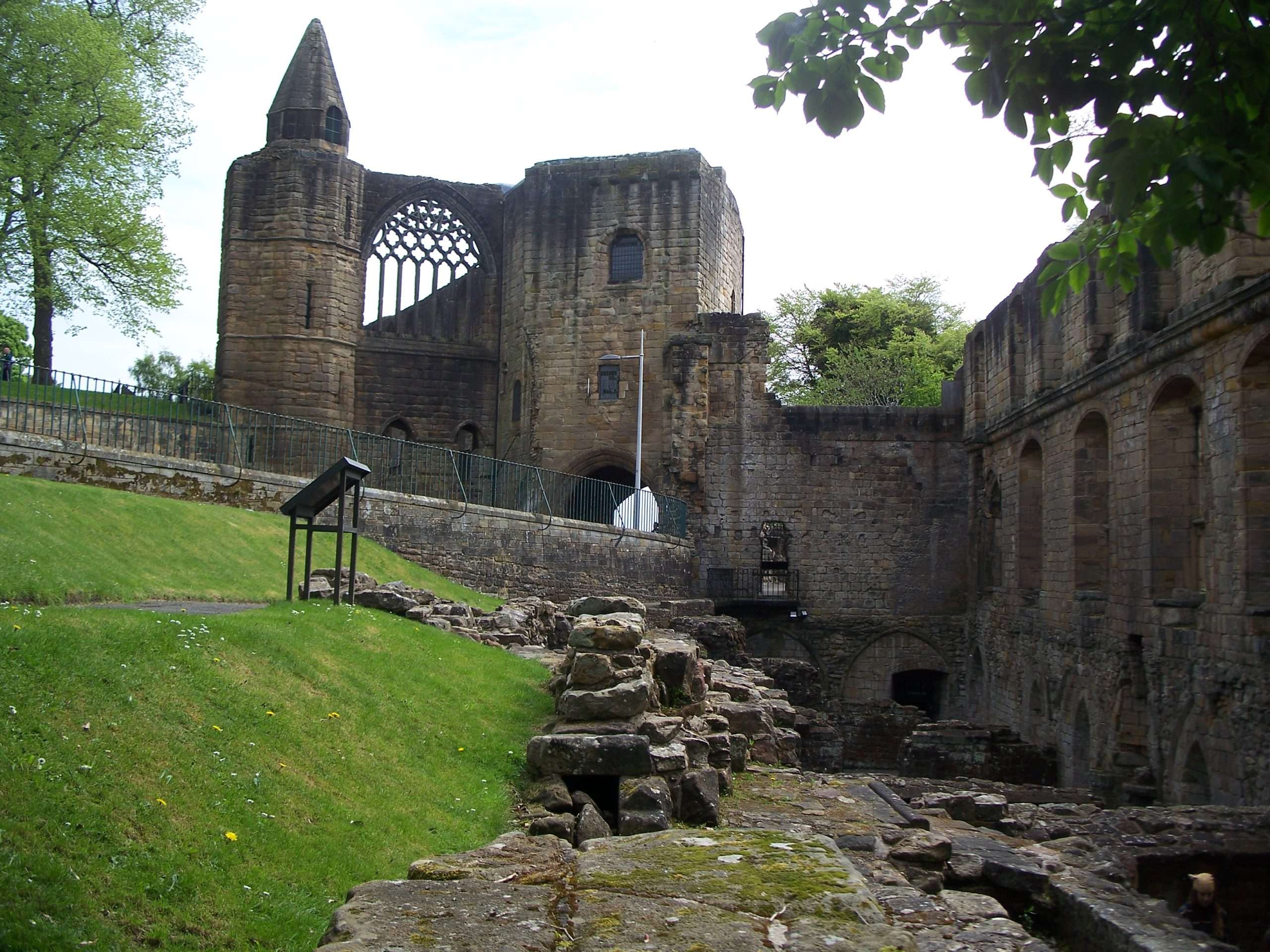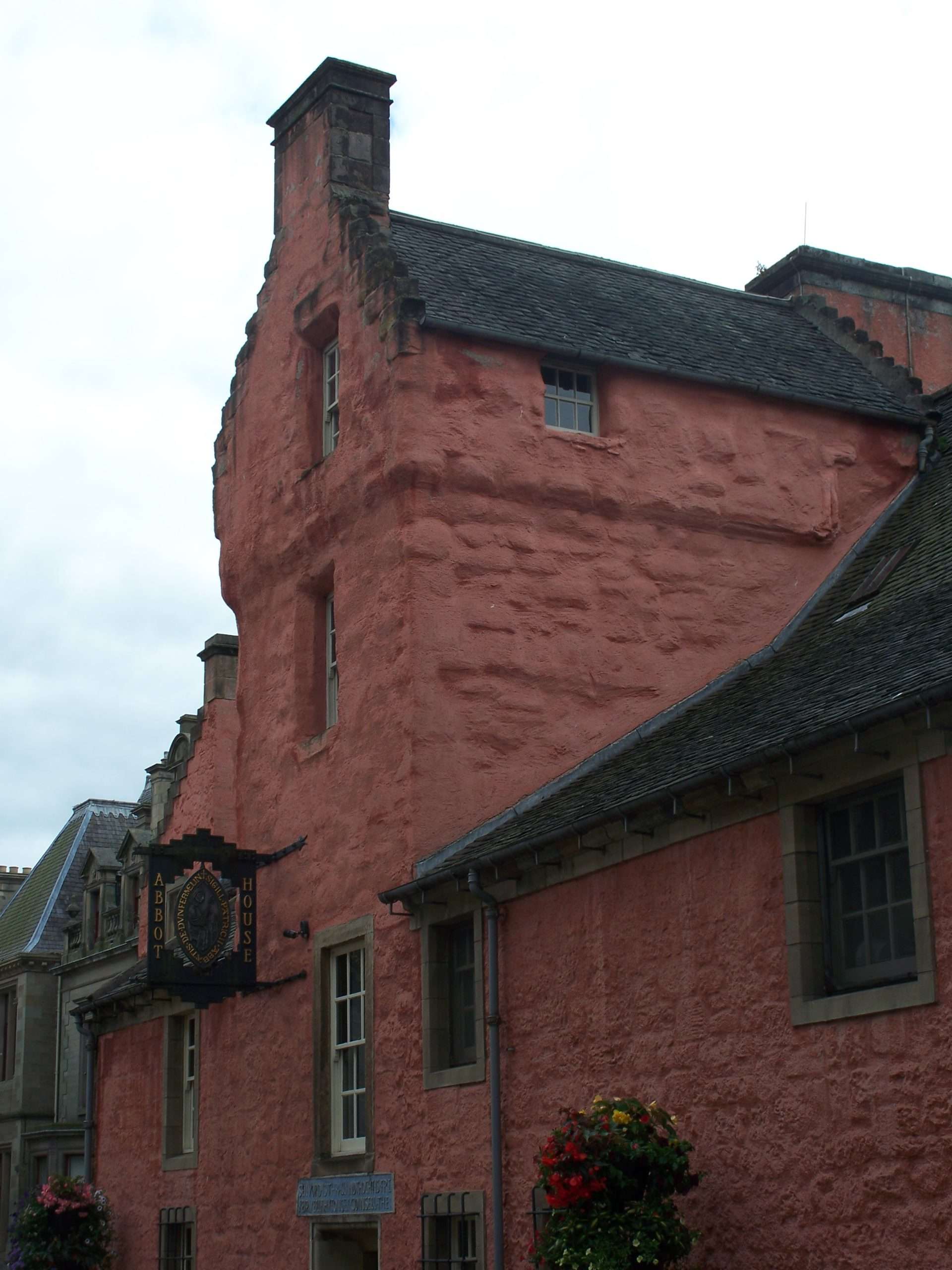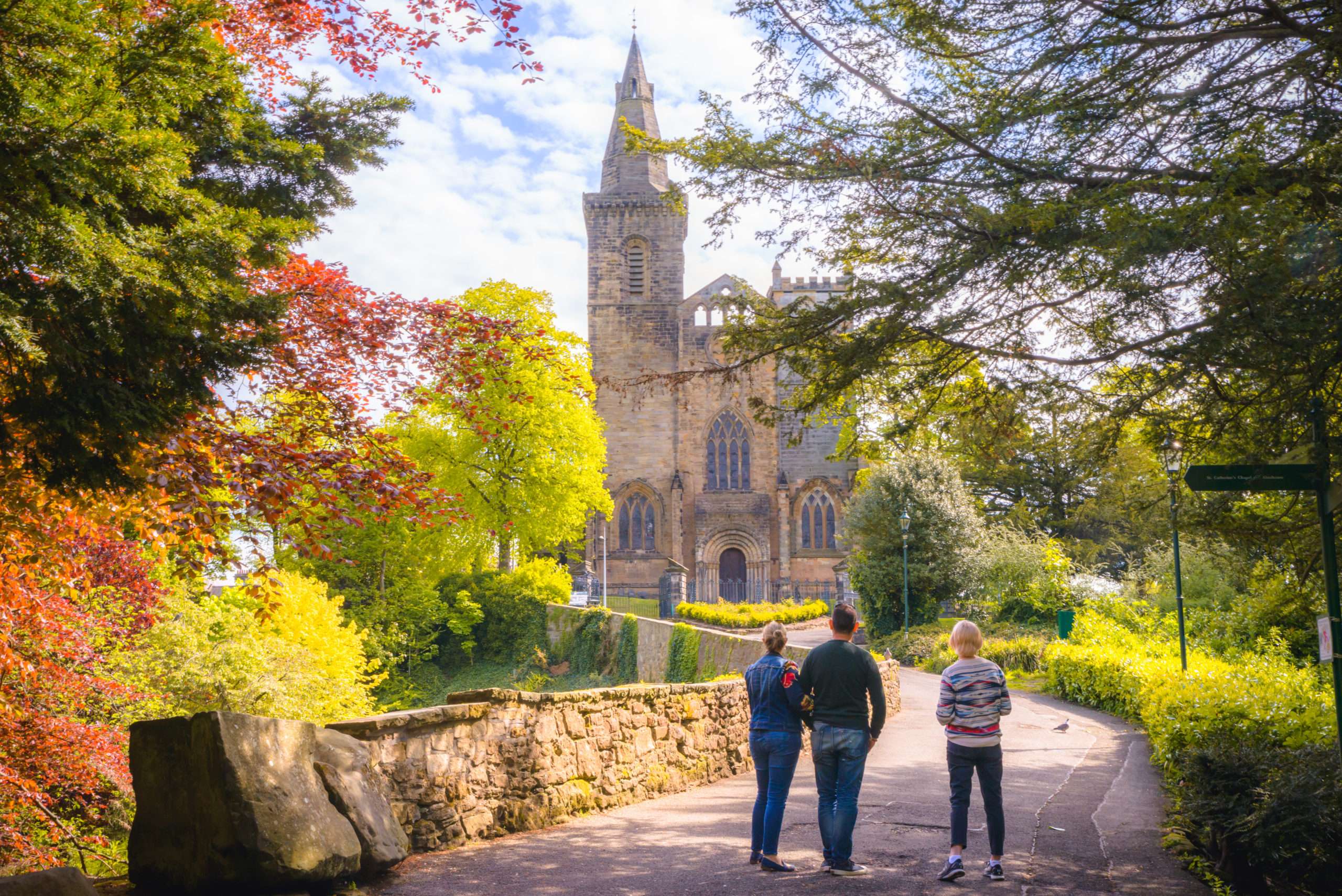Dunfermline is Scotland’s newest city; it was awarded this status in 2022 as part of the late Queen Elizabeth’s Platinum Jubilee Celebrations. Oddly, it’s also one of Scotland’s oldest cities. Like Stirling and Edinburgh, it has a historic quarter with medieval origins, in this case squeezed between the town’s busy shopping streets and Pittencrieff Park.
There are none of the crowds you’d associate with Edinburgh’s Royal Mile, Stirling Castle or Linlithgow Palace. In fact, if tourist Edinburgh’s sheer busyness wears you down, you could do worse than hop on a train to Dunfermline. If you do, you’ll alight at a station that has been speedily renamed Dunfermline City: it was formerly Dunfermline Town. You also get to cross the wondrous Forth Bridge.
The capital of Scotland

Dunfermline has a very long history. In the 11th century it was the stronghold of King Malcolm III and arguably the capital of Scotland, so its city status was perhaps overdue. Ruins known as Malcolm’s Tower stand in Pittencrieff Park but the name is misleading; what’s visible probably dates only from the 14th century. However, Malcolm’s residence may well have occupied the same site; there’s a lot of ‘perhaps’ and ‘may’ when we talk about a thousand years ago. We do know that Malcolm married his Queen, Margaret, at Dunfermline in 1070.
Margaret was a particularly devout Roman Catholic and founded a religious house at Dunfermline, importing Benedictine monks from Canterbury to get it started. Four of her sons subsequently became kings of Scotland; even her youngest, David 1, came to the throne, in 1124; this year sees the 900th anniversary of his accession. David was determined to see his mother’s religious community become a major abbey and installed Geoffrey, the former prior of Canterbury, as abbot in 1228. David had grown up in England and he wanted to create an impressive building in stone, like the ones down south, for his mother’s foundation. He imported stonemasons from Durham Cathedral and the nave of the structure they built survives in Historic Scotland’s care, dominating this part of Dunfermline still.
Malcolm and Margaret both died in 1093 and were buried at Dunfermline Abbey. So too, in 1153, was David. Margaret’s and Malcolm’s remains were removed to a new dedicated shrine at the eastern end of the abbey church after Margaret’s canonisation. The shrine was a focus for pilgrims for centuries, but Malcolm’s and Margaret’s remains are said to have been removed for safekeeping at the Reformation, sent to the Escorial in Spain, and then lost.
Royal burials continued at Dunfermline for centuries. William the Lion and Alexander III are among those interred in the abbey. Most famously, Robert the Bruce (minus his heart) was laid to rest there in 1329. The last royal burial was Robert, the infant son of James VI, in 1601. The locations of most have been lost; we need Scottish equivalents of those clever people who identified Richard III of England below a Leicester car park.
St Margaret

Talking of car parks, Margaret was said to pray in a cave near the centre of modern Dunfermline. In recent times the area has been built up and a car park covers much of the site, but the grotto was preserved. Accessed by a steep flight of steps and a tunnel, St Margaret’s Cave became Dunfermline’s oddest attraction. Since the pandemic, access has been limited so it’s best to check before any planned visit. Queen (or Saint) Margaret is multiply commemorated around Dunfermline and Edinburgh, even in the name of the new city’s other railway station.
By the time of the Reformation, the abbey St Margaret founded was the third richest monastic foundation in Scotland. Afterwards, many of its buildings fell into decay, but the nave of the abbey church survived in use as the parish church. In 1821, a new parish church was consecrated on the site of the former choir; its tower is ringed in stone with the words KING ROBERT THE BRUCE so’s you know who’s buried there. The site of St Margaret’s Shrine is still identifiable, outside the church to the east, but its glory has departed.
The refectory is the most complete survivor of the monastic buildings at Dunfermline; an impressive gatehouse, which houses exhibition space and the Historic Scotland shop, links it to the monastic kitchens and the guesthouse. The spiral staircase down to the monastic kitchens is the tightest I’ve ever encountered, and as a history buff I’ve encountered quite a few. It’s strictly one person at a time.
Monks had a duty to provide hospitality for visitors and maintained guesthouses. Like hotels today, guesthouses offered different grades of accommodation; guests could be lowly, penniless pilgrims, and they’d get the budget beds. Yet visitors could also be royalty. The remains of one guesthouse survive at Dunfermline, with its earliest remains going back to the 14th century. It probably offered top of the range accommodation and in the 1580s, James VI’s Queen Anne employed the royal Master of Works, William Schaw, to transform the building into a royal palace. Their daughter (later Elizabeth of Bohemia, ‘The Winter Queen’) was born here in 1596 and in 1600 so was their son, the future Charles 1. Charles was the last ruling monarch to be born in Scotland or, indeed, to be a Fifer. His son, Charles II, visited the palace as late as 1650 but it fell into disuse soon after.
The most impressive surviving medieval buildings in Scotland

Abbey, palace and nave are amongst the most impressive surviving medieval buildings in Scotland, but they’ve been much altered over the centuries. The huge buttresses on either side of the nave were added in the 17th century to prevent the structure from collapsing. The southwest tower did collapse in 1807 and was replaced.
Also in Dunfermline’s historic quarter, the 1821 parish church is usually open to visitors. To the north of the kirkyard is the beautifully restored 16th century Abbot’s House, which has a gift shop and cafe on the ground floor. The rest of the building is not usually open to the public but there are occasional open days when you can explore this fascinating survivor.
In more recent historical times, Dunfermline is perhaps best known as the birthplace of Andrew Carnegie. If the city’s most famous son funded New York’s Carnegie Hall, he also funded Dunfermline’s Carnegie Hall. If he funded hundreds of libraries around the world, Dunfermline’s was one of them. The Carnegie Library now has modern extensions housing a gallery, museum and café making it a visitor destination as well as a community resource.

Carnegie bought the Pittencrieff Estate in 1902 and donated it to his home town; it is now the popular and elegant Pittencrieff Park which extends to 76 acres and is renowned for its peacocks. The magnificent 17th century Pittencrieff House, restored not long ago, used to be a local museum but is now sadly disused. However, the Carnegie Dunfermline Trust (it was set up by Carnegie in 1903 and owns the park) hope to reopen it as a public facility in the future. It would be a fantastic focal point for the park.
The birthplace of Charles 1, the shrine of St Margaret, the burial place of Robert the Bruce, the legacy of Andrew Carnegie; Dunfermline has enough to satisfy the most demanding history enthusiast.
Text by: David McVey.
Main photo: Dunfermline Abbey. Photo: VisitScotland.

